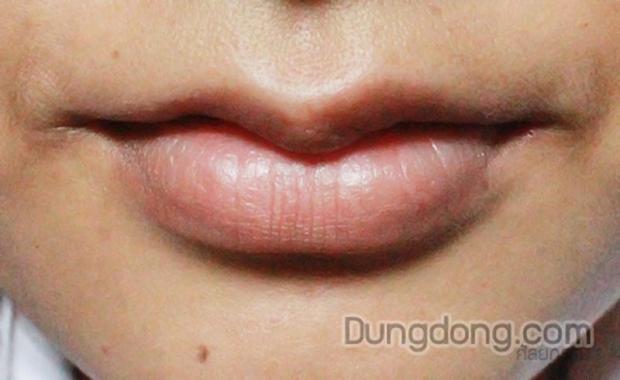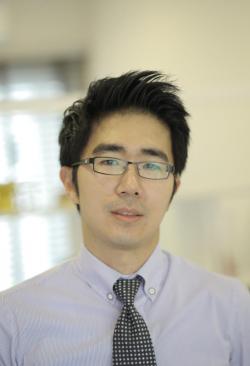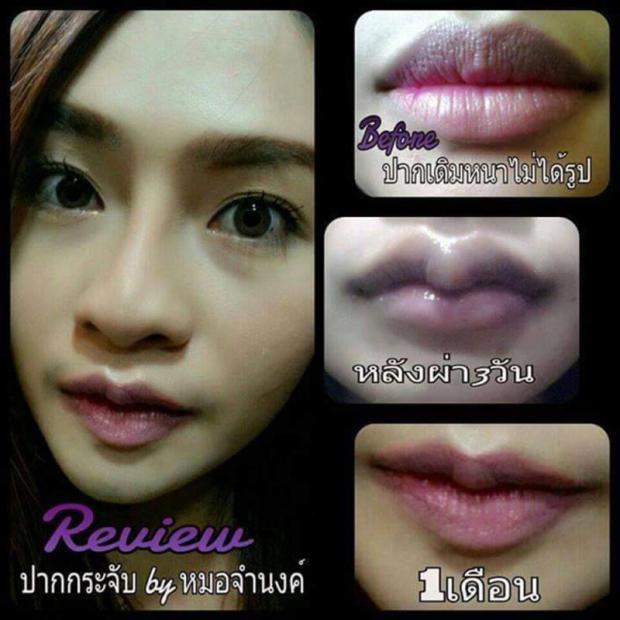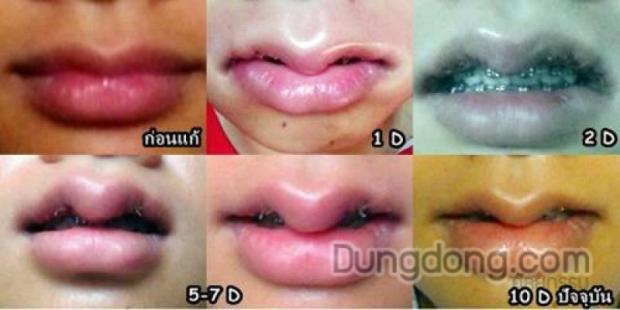
Plastic surgeon Chamnong Chirawichada has seen quite a few lip reduction cases during the past 15 years at his practice. But nothing has baffled him as much as the trend for thin lips shaped like buffalo horns which has emerged in Thailand -- and only Thailand -- in the past few years.
"It's a nationwide problem, this lip thing," he told Spectrum at his clinic in Rangsit. "I blame the internet for this."
The lip contouring technique is named after the water chestnut known in Thai as krachap and is essentially a form of lip reduction. The water chestnut, also known as the buffalo nut or bat nut, gets its name from its shape which resembles a buffalo head or a flying bat.
The shape is recognisable by the dramatic protruding of the middle section of the top lip, which is done by removing tissue from the left and right portions of the lip. But internet users are now flooding web forums with complaints of upper lip reductions that turn out so thin that it virtually disappears when smiling.
In some cases, the reduction is so extreme that when the mouth is closed, the lips don't touch each other completely.
"Sometimes it takes me half an hour to persuade a patient not to do it, but then they end up having it elsewhere," Dr Chamnong said. "Lip reduction is not appropriate for everyone."
For Dr Chamnong, that has led to a large number of rejected cases. But the requests keep coming, even though he admitted increasing the price -- now at 20,000 baht for each upper or lower lip -- because he is "too lazy".
"I've turned down thousands of requests during the past five years," he said.
THE ORIGIN
Plastic surgeons are puzzled as to exactly how the "krachap lip" trend originated, but they say it has picked up in the past four to five years. User posts on the plastic surgery internet forum Dungdong refer to the lip shape as early as 2009, with users expressing the desire to have thin-looking lips resembling those of actress Patcharapa "Aum" Chaichua.
"Thais also believe that the krachap will bring them wealth and fortune," said Pusit Jittilaongwong, a plastic surgeon who has been performing the krachap lip surgery for the past seven years. Surgery at his clinic costs 30,000 baht per lip, or 55,000 for both, a price Dr Pusit claims to be the most expensive in the country.
Dr Pusit is one of the most sought-after plastic surgeons for the krachap lip surgery, which represents 90% of his cases. Some 70% of his clients are women, most of who do not have oversized lips to begin with.
"I usually tell them that their lips will be smaller, as 30% of the tissue needs to be removed," he said.
While Western countries consider full lips to be pretty, the aesthetic preference among Asian women is for thin lips. Dr Pusit estimates that 70-80% of lip reduction cases worldwide are Thais, followed by Koreans and Malaysians. Also popular at his clinic is the smiling lip -- a type of lip surgery where the corner of the mouth is lifted so that it carves a permanent smile.
But the so-called krachap lip is unique to Thailand.
"Whenever I attend international conferences, no one mentions lip contouring or the krachap lip," said Dr Chamnong. "This is a Thai thing."
In one instance, Dr Chamnong had to turn down a request from a Thai woman who had flown in from Germany to undergo the krachap lip surgery.
"I told her farang like large lips, and warned her that doing so might end up in divorce from her German husband," he said.
BAD EXPERIENCES
Apart from the usual reviews, procedures and aftercare, internet forums are also flooded with trivial questions such as how much is too much, and what it is like to kiss with a krachap lip.
But there has recently been a sudden increase in the amount of "bad experience" reviews, with many saying that if they could turn back time they wouldn't have had the surgery.
A transgender woman who underwent the krachap lip procedure in September last year drew lots of criticism from internet users after she posted pictures of her lips on the Pantip web forum last month, warning people to think twice before getting the surgery done.
Her lips were of a normal size to begin with, but the surgery led to lips that are so thin that whenever she smiles, her upper lip is stretched up so high that a large portion of her gum is exposed.
"I was shocked. My mouth looked like the down-curved bill of the hornbill from the Amazon rainforest," she wrote. "Although it's been almost a year, I still can't fully smile. Whenever I do, I look like a ghost, so I tend not to smile at all."
Mint, a 25-year-old beauty salon employee, paid 13,000 baht to undergo a krachap lip surgery at a well-known clinic in 2013. She asked for a lip in the shape of a krachap, minus the reduction that usually comes with it.
"I was afraid it would be too thin," said Mint, who asked to be identified only by her nickname.
Shortly after the surgery, her lips developed keloid, which are painful scar tissues that may form from a surgical procedure. Around six months later, she had another surgery at a different clinic to remove the keloid, which cost her another 15,000 baht.
"I would avoid talking because I was afraid my friends would notice the scars," she said. "If I could turn back time, I wouldn't have done it because I didn't have any problems with my lips to begin with."
But by removing the keloid, the second operation has left her with an even thinner lip, which causes it to "disappear" whenever she smiles. Mint had her lip done when she still had braces, and she found out after subsequent visits to her dentist that she couldn't fully open her mouth.
"When I did it [the second operation], I was afraid it would turn out like Peak [actress Pattarasaya Kreuasuwansri] and I wouldn't be able to close my mouth," she said. "Now it appears as though my bottom lip is too thick just because my upper lip is so thin."
Five years after she posted her account on Dungdong, she still gets messages from people who face similar problems: either they developed keloid or their lips turned out to be too thin.
TOO MUCH REDUCTION
Despite warnings, some Thais resort to the internet to complain about how they were rejected by plastic surgeons, while others undergo a second procedure with another doctor to make their lips even thinner. But the problem of over-reduction is so severe, experts say, because it is almost irreversible.
Few plastic surgeons accept cases of over-reduced lips, and if they do, they charge an extra fee since the procedure is complicated and may involve using tissue from the inside of the mouth. It is impossible to get the patient's original lips back. In the worst cases the mouth is not able to close, and some internet users have even written about committing suicide.
"Some newspapers publish articles on how the krachap lip reduction may lead to good fortune, when in fact no one can confirm whether or not that is true," said Adunchai Thammasangsert, a plastic surgeon who wrote an article on the dangers of lip reduction procedures for the Society of Aesthetic Plastic Surgeons of Thailand in 2014.
"The fact is that Thais easily follow a trend and are superstitious, while clinics are getting richer.
"The large amount of internet reviews [of the krachap lip] is kind of a hypnosis in itself; making people believe that this type of lip shape is beautiful and others aren't."
Dr Adunchai said the standard height of an Asian upper lip is about 7-8mm. The standard for the lower lip is not more than 1cm. But many Thais don't have large lips to begin with, according to the mentioned standards.
While plastic surgeons are required to measure the lip before assessing the patient, the procedure is often bypassed. The same goes with teeth: lip surgery is not advised for patients with braces, but many surgeons proceed regardless.
"Many Thais are requesting such a huge reduction that it can lead to complications," Dr Adunchai said.
This includes unnatural smiles, not being able to open the mouth wide and not being able to close the mouth. At least half of all lip reduction cases develop fibrosis, which are hard lumps that tend to go away after several months, said Dr Adunchai.
Dr Chamnong, the Rangsit plastic surgeon, has a trick he uses to persuade his patients not to get the surgery done. They largely consist of two groups: those whose lips are already thin to begin with, and those whose upper jawline protrudes in a way that further reducing the upper lip would lead to the inability to close the mouth. Yet it doesn't guarantee that they will seek treatment elsewhere.
"I often tell these women that a beautiful mouth is one that can close," he said.

TIGHT-LIPPED: Mint, 25, underwent krachap lip surgery which resulted in a keloid formation. She proceeded to have a second surgery to fix it, leaving her with an even thinner lip. Photo: www.Dungdong.com




